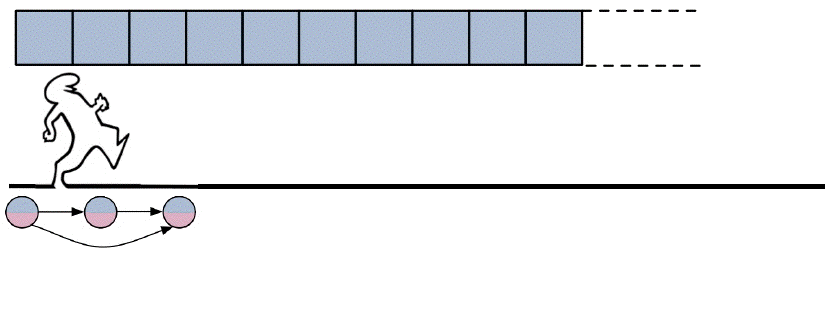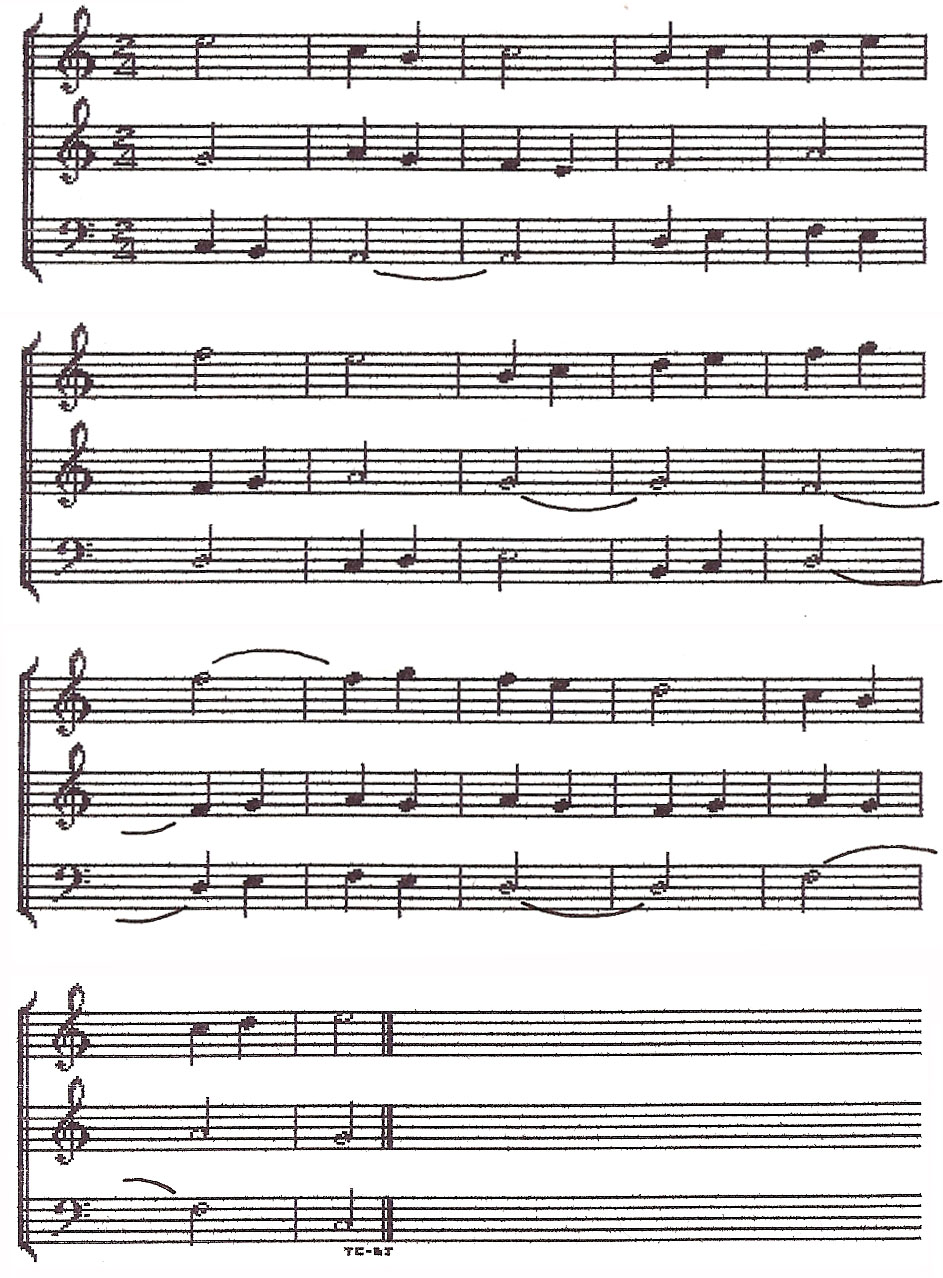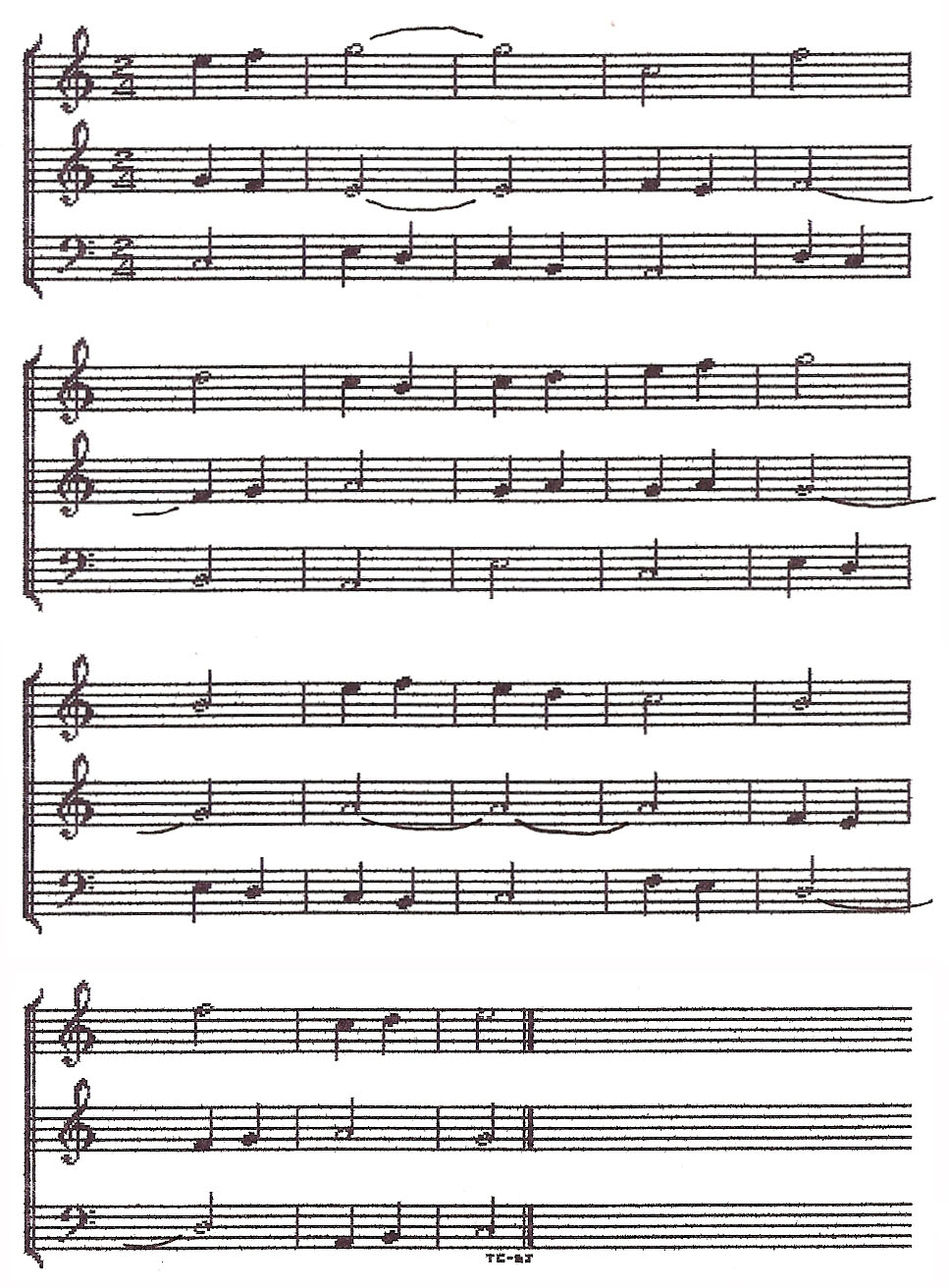 (harmonization examples)
(harmonization examples)Marc Chemillier
September, 1999
Revised version October, 2011
CHEMILLIER M., "Grammaires, automates et musique", J.-P. BRIOT & F. PACHET (eds.), Informatique musicale, Traité IC2, Paris, Hermès, 2004, 195-230.
Harmonic substitutions defined by Steedman's grammar studied in:
STEEDMAN M.J.,"A Generative Grammar for Jazz Chord Sequences", Music
Perception, 2, 1, 1984, 52-77.
CHEMILLIER M., "Toward a formal study of jazz chord sequences generated
by Steedman's grammar", G. ASSAYAG, V. CAFAGNA, M. CHEMILLIER (eds.),
Formal Systems and Music, special issue of Soft Computing, 8,
9, 2004, 617-622.
CHEMILLIER M., "L'improvisation musicale et l'ordinateur. Transcrire la
musique à l'ère de l'image animée", Terrain, 53,
« Voir la musique », 2009, 67-83.
Examples of simple blues chord progressions elaborated by applying this grammar. Each file is a six choruses long blues in E Major, computed by applying four substitution rules to each chorus to produce the next one. The resulting chord progression is arranged for solo piano in the boogie-woogie style. The program which computed those examples is made of two parts:
Step 0: E / E / E / E7 / A / A / E / E / B / B7 / E / E
Step 1: E / E / E / B7 Bb / A / A / E E / E C#7 / F# 7 /
B7 / E / E
Step 2: E / E / C7 / B7 Bb / A / A / E E / E G / F# F#7 /
F / E / E
Step 3: A7 / G#7 G7 / C C7 / B7 Bb / A / A A / E E / E G /
F# F#7 / F F / E / E
Step 4: Eb / D C# / C C7 / B7 Bb / A A / A A / E E / E G /
F# F#7 / F F / E E / E
Step 5: Eb / D C# / C C7 / B7 Bb / A A / A A / E E / E G /
F# F#7 / F F / E E / E
Step 0: E / E / E / E7 / A / A / E / E / B / B7 / E / E
Step 1: E / E E / E / E E7 / A / A A / E D7 / G7 / C C7 /
B B7 / E / E
Step 2: E / E E / E E / F7 E7 / A / A A / E G# / G G7 / C
C7 / B F / E / E
Step 3: E / E E / C#7 F#7 / F7 E7 / A A / A A / E G# / G
C# / C C7 / B F / E E / E
Step 4: E / E G#7 / C#7 C / B Bb / A A / A A / E G# / G C#
/ C C7 / B F / E E / E
Step 5: Bb7 / A7 D7 / C#7 C / B Bb / A A / A A / E G# / G
C# / C C7 / B F / E E / E
More precisely, a "substitution" is a transformation which consists in replacing certain chords of the chord progression by other chords. The following three examples are represented as arrays, in a way familiar to jazz musicians. The first one is the basic chord progression of the blues. The second one is derived from the first one by applying a few substitutions:
| C | C | C | C7 |
| F | F | C | C |
| G | G7 | C | C |
| C | C | C | Gm7 / C7 |
| F | F | C | A7 |
| Dm7 | G7 | C | C |
| C | Bm7 / E7 | Am7 / D7 | Gm7 / C7 |
| F | Fm7 / Bb7 | Em7 | Ebm7 / Ab7 |
| Dm7 | G7 | C | C |
In the following audio files, the three preceeding chord progressions are arranged by using the Band-in-a-box software. The arrangement is computed in the "Blues even" style, for piano, bass and drums (with an organ part played manually) :
On November 7th, 2011, a meeting was organised by IRCAM and INRIA to celebrate Pierre Barbaud's birthday (October 10th, 1911 - Septembre 10th, 1990) :
http://www.ircam.fr/colloques.html?event=1088
http://www.inria.fr/centre/paris-rocquencourt/actualites/pierre-barbaud-centenaire
 (harmonization examples)
(harmonization examples)An example of a three part counterpoint computed by Pierre Barbaud. This file is the midi translation of the file entitled LCONT1.B3I, which is an original file coded in the format of the synthesis machine called Biniou. We are greatly endebted to Frank Brown (05 April 05, 1944 - Paris, January 22, 2012) a former teacher at the Université du Mans and a collaborator of Barbaud in the group BBK Barbaud-Brown-Klein (http://franck.brown.free.fr/Barbaud/) who gave us some copies of these original files. This sequence was played at a concert (March 14th, 1989) devoted to Barbaud. The automaton which computed the following example is partly described (in French) in:
BARBAUD P., Vademecum de l'ingénieur en musique, Springer, 1993, chapter 5, 105-134.
It is made of two parts:
Other examples of files obtained by a simulation of another program of Barbaud (chapters 3 and 4 of his book).
In addition to the 2004 general overview mentionned on top of this Web page "Grammars, automata and music", the formal model introduced by Barbaud is described in the following papers, and here is a letter by Pierre Barbaud about the report published in 1987.
CHEMILLIER M., "Monoïde libre et musique, 1ère partie", RAIRO Inf. Theo., 21, 3, 1987, 341-371 (pdf).
CHEMILLIER M., "Solfège, commutation partielle et automates de contrepoint", Math. Inf. Scienc. hum., 110, 1990, 5-25 (pdf).
There exist a "Pierre Barbaud association" devoted to his memory and a biography on Wikipedia (in French) about this composer who wrote the soundtrack of movies by Chris Marker (Dimanche à Pékin, 1957, Lettre de Sibérie, 1958), Alain Resnais (Hiroshima mon amour, 1959, L'année dernière à Marienbad, 1961), Agnès Varda, and promoted the concept of "algorithmic music":
http://www.associationpierrebarbaud.fr/
http://fr.wikipedia.org/wiki/Pierre_Barbaud
Examples of fragments of two voice inventions in a style derived from Bach's, computed by a program by David Cope. The full code in Commun Lisp is published in:
COPE D., Computer and Musical Style, AR-Editions, 1991, chapter 4, 89-140.
The program is built in three parts:
Examples of three part counterpoint computed by applying an algorithm for synchronizing automata designed by Dan Timis (Bucharest, July 15, 1954 - Mountain View, February 3, 2009). Each automaton generates one part of the counterpoint. The formal model underlying this algorithm is described in the papers referenced below, including some rare unpublished manuscripts by Dan Timis:
TIMIS D., "Une grammaire générative pour la musique", Mémoire de DEA Esthétique et sciences de l'art, Sorbonne Paris IV University, 1983 (pdf, 3.7 Mo, 22 pages).
TIMIS D., "Théorie des codes et analyse musicale", Mémoire de DEA Esthétique et sciences de l'art, Sorbonne Paris IV University, 1983 (pdf, 5.1 Mo, 25 pages).
CHEMILLIER M., "Monoïde libre et musique, 2ème partie", RAIRO Inf. Theo., 21, 4, 1987, 379-417 (pdf).
CHEMILLIER M. & TIMIS D., "Toward a theory of formal musical languages", Proc. of the ICMC 88, Cologne, 1988, 175-183 (pdf).
CHEMILLIER M., "Solfège, commutation partielle et automates de contrepoint", Math. Inf. Scienc. hum., 110, 1990, 5-25 (pdf).
CHEMILLIER M., "Automata and music", Proc. of the ICMC 92, San-Jose, 1992, 370-371.
CHEMILLIER M., "Synchronization of musical words", Theoretical Computer Science, 310, 2003, 35-60.
A copy of the page of Dan Timis notebook (Spring 1986) where he set up for the first time the construction of the synchronization automaton, and a letter by Stephen Travis Pope about the ICMC 88 paper by Chemillier and Timis.
The following audio files illustrating Dan Timis algorithm were computed in 1992 at Ircam by means of the human voice synthesis software called Chant thanks to the collaboration of Francisco Iovino (January 5, 1966 - November 28, 2020). Francisco passed away at age 54, he has studied at Columbia with Fred Lerdahl and Tristan Murail, and produced works using very advanced computer assisted tools. Then he had an amazing New York career in the music industry, achieving several hits with international impact as far as Asia.
 |
 |
 |
A very nice article by Morel Koren for remembering our good friend Dan Timis:
KOREN Morel, "In Memoriam of my friend Dan Timis (1954-2009)", Min-ad, 7, August 2009, published on-line:
http://www.biu.ac.il/hu/mu/min-ad/8-9-II/Koren_on_Dan_Timis.pdf
Other Web sites devoted to Dan's memory:
http://www.museresearch.com/blog/2009/02/tribute-to-dan-timis/
http://www.ultrasomething.com/photography/2009/02/for-dan/